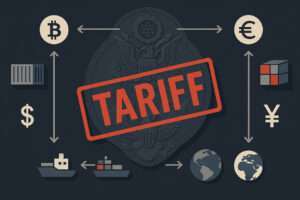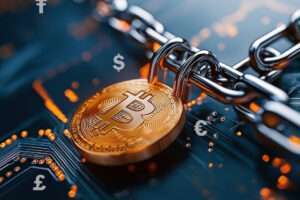Today, Bitcoin holds the unique position of the strongest Cryptocurrency, serving as both a network and an asset. Viewing Bitcoin as a network and digital gold asset highlights its duality. As potential investors and Crypto fanatics from the UK look toward the Bitcoin world, understanding this duality is critical for making informed investment decisions, especially when it comes to the growing talks surrounding Bitcoin ETFs.
An asset with Programmed Scarcity
As an asset, Bitcoin’s supply moderation is not just a feature but the bedrock of its value proposition. With a cap of 21 million coins, its scarcity is digital and definitive. As of recent statistics, over 19.52 million bitcoins have been mined out of the total expected quantity. This scarcity is maintained through an algorithm by halving events roughly every four years. With each halving season, the reward for mining new blocks is reduced by 50%. The next halving is on April 19th, expected to last 9 minutes. Experts hint at a historic increase in the asset’s value, reinforcing the notion of Bitcoin as digital gold.
Suffice it to say, that Bitcoin’s value is not solely tied to its scarcity. Its open-source code allows for verification at any point, ensuring integrity and transparency. These attributes are partially lacking in physical assets like gold.
Decentralized Network
Moving beyond the asset, Bitcoin relies on the Bitcoin network. It is a vast, distributed ledger of computers, known as nodes and miners operating in unison to process transactions and secure the Blockchain, making Bitcoin function as both a network and digital gold asset.
Basically, miners engage in a race, channelling electricity into the system to solve complex mathematical problems. Upon successful application, they get a new block of transactions to the Blockchain. An outstanding feature of the Bitcoin network is its difficulty adjustment algorithm. This algorithm maintains a consistent average time of ten minutes per block, regardless of the total number.
The idea behind this order is that even in the case of an influx of miners, the supply rate remains steady. This helps manage potential inflation. All updates to the system’s code require consensus among nodes. This process safeguards the network against unauthorized manipulation and maintains its decentralized ethos.
Immunity Against Attacks
Bitcoin’s decentralized architecture is technically awesome, providing resilience against attacks. To hijack the system and process illegitimate transactions, one would need to control a majority of the mining power. This is commonly referred to as a 51% attack. In reality, experts believe this figure is closer to two-thirds. The complexities involved in containing such an attack make this threshold more challenging.
Bitcoin and Lightning Experience
While the conversation in the UK financial sector might be abuzz with the recent approval of Bitcoin ETFs allowing investors to speculate on the price movements of Bitcoin, there’s a dimension to Bitcoin that ETFs can’t offer. The Bitcoin network is an enormous economic playground where users, armed with private keys, can transact directly, peer-to-peer, anytime and anywhere.
The expansion of the Lightning Network extends the utility of Bitcoin beyond a store of value and is en route to becoming a global, neutral payment rail. This is particularly coming in handy in regions with banking limitations and high inflation rates.
Just recently, Lightning Labs’ announcement to enable transfers of assets like Stablecoins over the Lightning Network will boost Bitcoin’s push to a globally accessible financial settlement layer for multiple currencies.
Navigating the Trade-offs
Investors who wish to invest in Bitcoin via an ETF must appreciate what they might be trading off. While ETFs offer a familiar investment mechanism with easier portfolio integration, they do not grant you the network benefits that come with holding Bitcoin. Being part of the Bitcoin network is about having control over your assets 24/7 and engaging in a global economic system that runs 24/7.
Before opting for the seeming simplicity of an ETF, individuals should first try Bitcoin as a Cryptocurrency. Understanding the differences between operating within the network using exchanges, self-custody wallets and becoming part of an unfathomable financial revolution is here thanks to Bitcoin. For investors in the UK, considering the full scope of Bitcoin’s capabilities and implications as a network and digital gold asset might pave the way for a more profound engagement with this top Digital Asset.
Image Source: Adobe Stock
Disclaimer: This article is provided for informational purposes only. It is not offered or intended to be used as legal, tax, investment, financial, or other advice.












